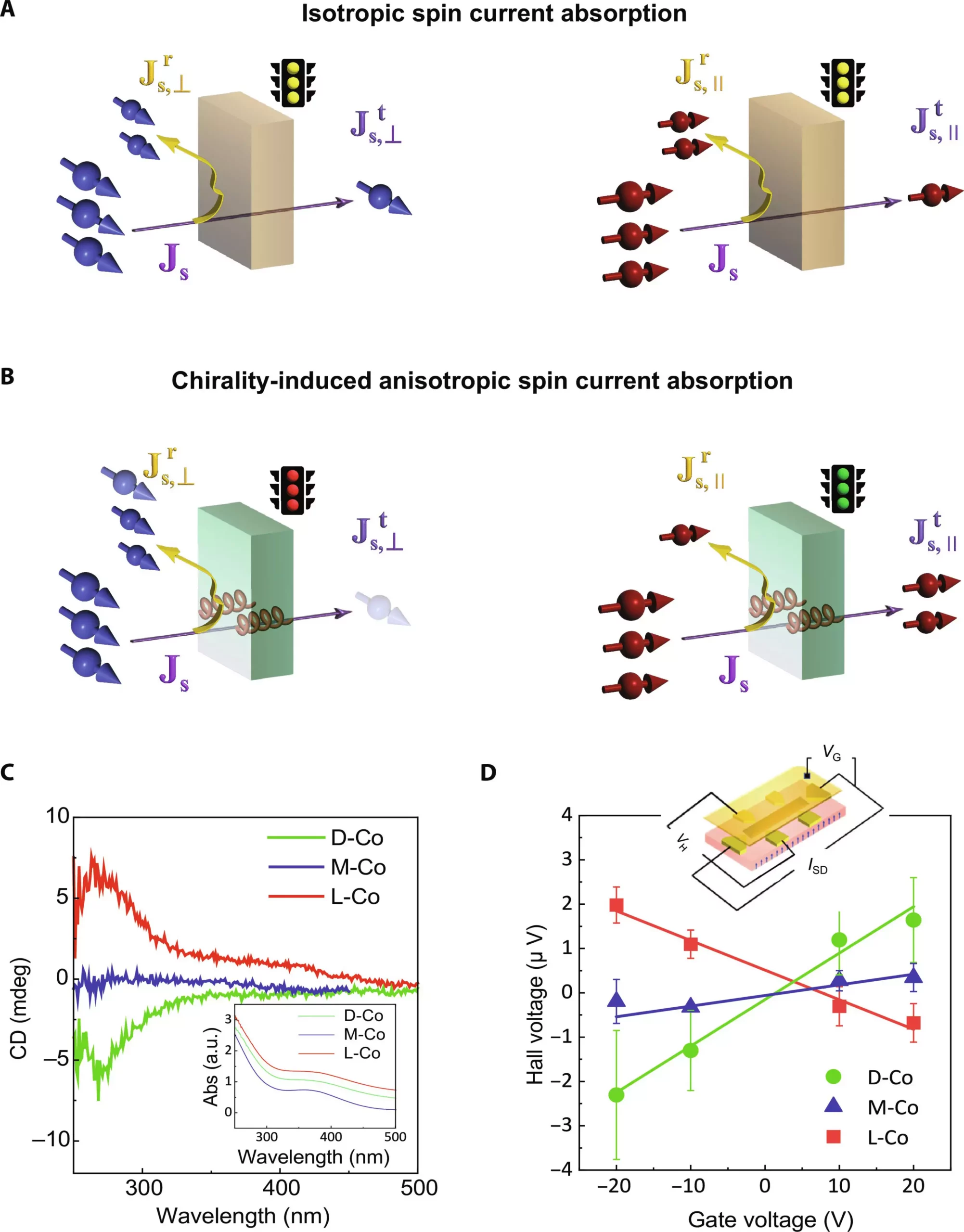The research conducted by North Carolina State University and the University of Pittsburgh focused on the movement of spin information, known as a pure spin current, through chiral materials. This study revealed that the direction in which spins are injected into chiral materials plays a crucial role in their ability to pass through these materials. Chiral materials, often referred to as “gateways,” have the potential to be utilized in the development of energy-efficient spintronic devices for data storage, communication, and computing purposes.
The Significance of Chirality in Spintronics
In the realm of spintronics, the goal is to transfer spin information through a material without the need to move the associated charge. This distinction is essential as moving charge requires more energy, leading to increased heat generation in electronic devices such as phones and computers during prolonged usage. Chiral materials, characterized by their inability to be superimposed on their mirror image, enable researchers to control the spin direction within the material, akin to the differing orientations of left and right hands.
The study conducted by the research team challenged the previous notion that the sense of chirality in a material significantly influences the movement of spin within it. While the chirality remains crucial when an entire electron is being transferred through the material, the research revealed a new perspective. When pure spin is injected into a chiral material, the absorption of spin current is heavily influenced by the angle between the spin polarization and the chiral axis, rather than solely relying on the material’s handedness.
Experimental Approaches and Findings
The research utilized two distinct methods, microwave particle excitation and ultrafast laser heating, to introduce pure spin into selected chiral materials. Both approaches produced consistent results, underscoring the importance of spin direction in chiral materials such as cobalt oxide thin films. The team observed a significant improvement in spin absorption when the pure spin was aligned parallel or anti-parallel to the chiral axis, leading to a 3000% enhancement in its ability to pass through the material.
The findings of this study suggest that the design of chiral gateways in electronic devices could revolutionize the field of spintronics by enabling the efficient transfer of spin information in a specific direction. Additionally, the research challenges existing beliefs about the interaction between chiral materials and spin, paving the way for further exploration in this domain. Published in Science Advances, this work signifies a step forward in understanding the intricacies of spin direction in chiral materials.
Overall, the research conducted by the collaborative team sheds light on the critical role of spin direction in chiral materials for the development of energy-efficient spintronic devices. By unraveling the relationship between spin polarization and chiral axis orientation, the study opens up new possibilities for harnessing spin information in electronic applications.


Leave a Reply